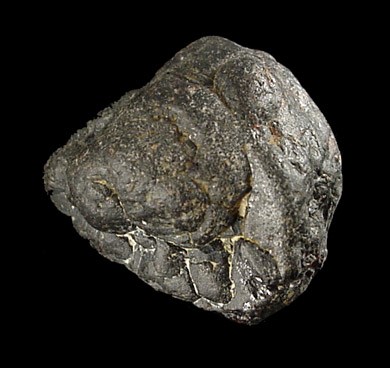


Tingha (EL9209), Leviathan (EL9231 and ELA6385) and Elsmore (ELA6385)

Torrington (EL9265) and Pyes Creek (EL9246)
Eastern Tin & Base Metals Project
The package comprising the Eastern Tin & Base Metals Project is four granted exploration licenses EL9209 (10 units), EL9231 (11 units), EL9246 (11 units) and EL9265 (6 units), and two exploration license applications - ELA6385 (14 units) and ELA6386 (37 units). The granted licenses cover a total of 38 units, or 114 sq.kms., or 11,400 ha. and the applications cover a total of 51 units, or 153 sq. kms., or 15,300 ha. providing a total area of 267 sq. kms. or 26,700 ha.
The Project is 100% owned by New South Tin Pty Limited, a wholly owned subsidiary of Minerals City Pty Limited. The granted exploration licenses have a term of three (3) years expiring July/August 2024 and the exploration license applications have been applied for with a term of three (3) years. It is anticipated that these will be granted in Q1 2022.
The licenses are located a short distance from Tinga, Emmaville and Delungra. The ELs and ELAs sit on the New England Orogen, NSW, which is host to two of the largest historical tin provinces in Australia, of which discoveries in the 18th century sparked mining rushes and resulted in the establishment of the townships of Tingha and Emmaville, both nearby to the tenements. At this time NSW was the largest producer of tin globally.
With the recent upward mobility of the relevant commodity prices and the growing demand for Tin by the electric vehicle (EV) industry, the 100% owned tenements hold significant value and demonstrate exciting future potential.


EL9209 is located in close proximity to the township of Tingha in the tablelands of northern NSW and contains 50 historic tin prospects. The geology of the area includes a large tin bearing Triassic Age granite (Gilgai Granite) that has intruded the earlier, more extensive Permian Tingha Granite with pendants of metamorphosed (metasediment) country rock around the margins of the intrusive complex. Historically, tin has been identified as the major metal present as cassiterite in the mineralised granite with a minor tungsten based hybridisation of fluid evident in some exposures. Whilst most of the tin deposits within EL9209 are alluvial in nature, it is hypothesised that numerous potentially large tonnage disseminated/stockwork style deposits may exist which require follow up. The large number of historic tin occurrences within this exploration licence make it an attractive prospect for a potential discovery. In 1982 an alluvial reserve was reported as follows:

EL9231 is also located in close proximity to the township of Tingha in the tablelands of northern NSW. EL9231 contains the historic Leviathan Tin Mine which was in operation sporadically between 1901 and 1930. Past production yeilded 25,256 tonnes of production at 0.44% Sn, and four diamond drill holes in 2010 intercepted narrow shoots of grades up to 0.25% Sn, 52g/t Ag, 1.74% Cu and 1.47% Zn from 15m below surface. RSA believes there is untested potential at Leviathan and a re-interpretation of the lodes with modern exploration techniques applied can significantly extend the size of the known resource. In addition to Leviathan, EL9231 is host to a number of additional high-grade prospects, including Jezs Prospect (rockchips at 1.65% Cu, 1.16% Zn, 242g/t Ag, 6000ppm Sn and 10.8% Pb), Lady Mary Copper Mine (rockchips from shafts at 10% Cu, 210g/t Ag, 3.72% Pb, 45g/t Ag and 5900ppm As), Markhams Silver Mine (rockchips at 198g/t Ag and 7.48% Pb), Spicer and Co Mines (rockchips from dumps at 720g/t Ag, 7.37% Pb and and 1680ppm Bi) and Silver Valley Lode (a three tonne bulk sample assayed 270g/t Ag and 14% Pb).


Leviathan Tine Mine
EL9246 and EL9265 in close proximity to the historical tin mining province of Emmaville, and both contain 25 and 14 historic mineralisation occurrences, respectively. Both exploration licences contain historic open pit and underground mine workings with rock chip samples containing in excess of 4% Sn and 200g/t Ag. EL 9246 is located 35 kms north-east of The Taronga Tin Project which is an open-pit mine being developed near Emmaville in NSW by Aus Tin Mining Ltd. It is considered to be the world’s fifth biggest undeveloped Tin Project. This nearology, coupled with the historic workings and rock chip results indicates thelarge potential that exists for economic mineralisation to exist on the ground held by Resources SA Pty Ltd.
ELA6385 is a 13-unit tenement application north of Tingha and immediately adjacent to TinOne Resources Corporation and Stannum Pty Ltd (Sky Metals Limited). The regional geology of ELA6835 is the same as EL9231 in section 1.1 above. It can be summarised as being a large, tin bearing Triassic Age granite (Gilgai Granite) that has intruded the earlier, more extensive Permian Tingha Granite with pendants of metamorphosed (metasediment) country rock around the margins of the intrusive complex.
ELA6386, or the Delungra ELA, encompasses an area of granite-country 50km northwest of the Tingha tin province with a number of known mineral occurrences and historic production sites. The Metallogenic Study of the Inverell Region from the Geological Survey of NSW (Brown and Stroud, 1997) list a number of significant metallogenic occurrences in the Delungra ELA. The largest of these is the Fitzpatrick and Spillers Sn deposit with historic records stating that the deposit was worked from 4 shafts over a strike length of 30m and down to a depth of 40m. Other major workings include the arsenic Corry and Party Mine, at which several thousands of tonnes of ore were processed and the remains of a furnace and flue are still evident.

Cassiterite from Tingha, Elsmore, NSW, Australia